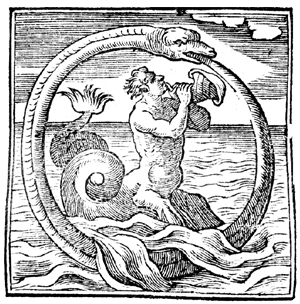ABOUT THE COVER
Ouroboros
The cover displays a colorized picture from the 1621 edition of Andrea Alciato, Emblemata (Book of Emblems), Padua: Tozzi 1621 and is provided courtesy of Dr William Barker (http://www.mun.ca/alciato)
Triton, trumpeter for Neptune, god of the sea, is the focal point and represents the lye material that is at the core of every process. Lye is at the center of Ormus collection chemistry and is present as a liquid solution, dry crystals or sometimes as pure sodium metal.

The symbols contained in the emblem include the Ouroboros, Triton, seawater, sand, air and pyramid; and each provides insights into Ormus and its collection processes. Seawater is a widely used Ormus source material and there are Ormus collection processes utilizing sand. In addition, Ormus is also found in the air. The presence of the pyramid hints at the antiquity of this knowledge and generates a feeling of connectedness to an ancient past.
Ormus collection is part of the great work and has been defined by Paracelsus as “the ability to control, purify and transform nature by the living power of the spirit” (sic: found in all things). The symbol for the great work is a circular snake or spiraling dragon devouring its own tail and termed an “Ouroboros.” This symbol presents a picture of the circle of alchemy, and the steps in Ormus collection processes follow such a circular path. Ancient alchemists have said: “What is now dry must soon become wet.” This mirrors modern day Ormus collection where steps involve a “wet” followed by a “dry” followed by a “wet.” Additionally, among the several different Ormus collection processes, there are steps shared with those of other processes all in a circular and seamless manner.
This Emblem symbolizes the great work performed during Ormus collection and is a fitting cover for Ormus: Modern Day Alchemy.